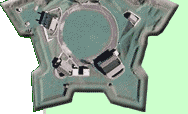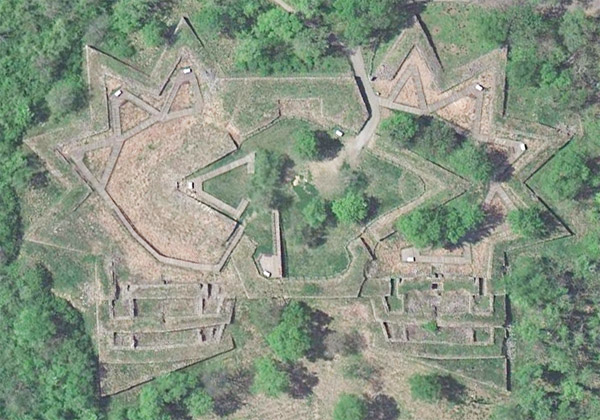
 |
 |
Fort Negley Nashville, Tennessee |
 |
 |
 |
 |
 |
||
 |
During the US Civil War (1861-1865), Nashville was a Confederate transportation hub of railroads, rivers and roads that Federal forces captured in early 1862. The city quickly became the main supply depot supporting the Union army's efforts in the Western Theater, so naturally thoughts of defensive fortification came to the Federal mind. Overseen by Captain James St. Clair Morton (1828-1864), free blacks and slaves who had flocked to Nashville once the Union army had captured the city were conscripted as laborers for the construction of Fort Negley. Morton had been involved in other fort-building projects, most notably that of Fort Jefferson in Florida, and would be killed in June of 1864 while scouting the area at Petersburg in his capacity as General Ambrose Burnside (1824-1881)'s chief engineer. As for the 2700+ folks who actually built Fort Negley, 600 to 800 of them died during construction, and only 310 ever received any pay. Fort Negley was named for Union Army commander General James S. Negley (1826-1901), was built on a mountain just to the south of Nashville, and was the largest inland masonry fort constructed during the Civil War. Even today in its depleted state, Negley looks impressive. Sadly, when the Confederate Army of Tennessee under Lt. Gen. John Bell Hood (1831-1879) returned in December 1864 to reclaim Nashville, the resulting battle was fought even further south of the city than Fort Negley, and this most starrish of starforts wasn't involved. Federal forces under Maj. Gen. George H. Thomas (1816-1870) routed Hood, and the Battle of Nashville was the last major engagement in the war's Western Theater. Once the Union Army left the area in 1867, Fort Negley fell into disuse. The local chapter of the Ku Klux Klan used the fort as a meeting place, perhaps ignoring the fact that the fort had been built by their beloved federal government. In 1937 the Work Progress Administration made the restoration of Fort Negley as a historic center a major project, but right around the time they were finishing, the Second World War (1939-1945) broke out. Suddenly everyone found they had more important things to do than pulling up weeds around as abandoned Civil War fort. Following the war, Fort Negley continued to decay, becoming a popular location for various unpleasant activities. All access to the fort was closed, and the forest moved in to reclaim its rightful homeland. The surrounding area eventually became a municipal park, first sprouting baseball and softball diamonds, and then a minor league ballpark. Interest in Fort Negley rekindled in 1964 due to the Civil War's centennial, but it wasn't until the beginning of the 21st century that funds were made available for the restoration of the fort. Fort Negley finally reopened to the public on December 10 2004. The restoration focused on making the grounds more accessible by removing larger trees and replacing wayward blocks, though there was no effort to restore the fort to its Civil War appearance. More work is planned, however, so perhaps Fort Negley will get its chance to defend the Union supply depot from the wicked Southrons yet!  | |
 |
||
|
|
|||||||
Info Source 1
Info Source 2
Info Source 3
Info Source 4
Info Source 5 Info Source 6 Info Source 7 Info Source 8 Info Source 9 Info Source 10 Thanks to Google Maps for the image! ©2010 starforts.com |
 |